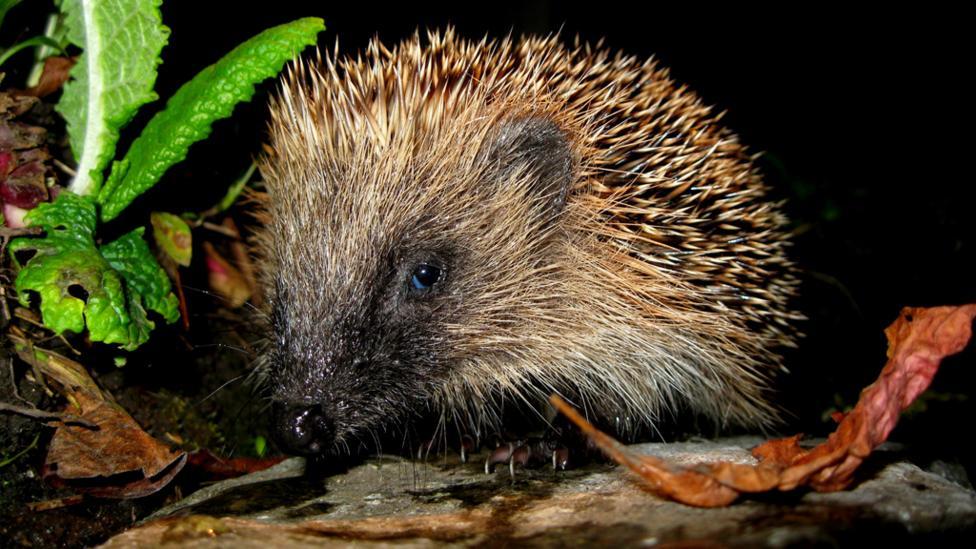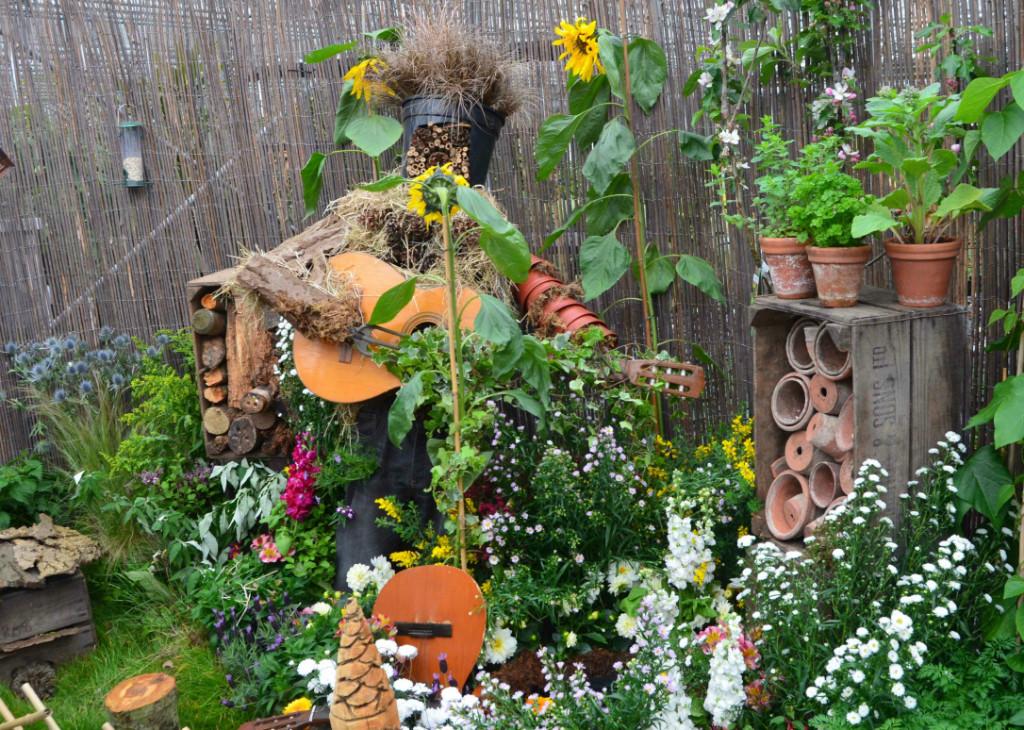In the hustle and bustle of modern life, where city streets often drown out the sounds of nature, the idea of creating a sanctuary for wildlife in our own backyards stands as a testament to our connection with the natural world. Imagine stepping outside to a chorus of birdsong, the flutter of butterflies, and the gentle rustle of small mammals drawn to your thoughtfully curated outdoor space. Such a transformation is not only possible but can be achieved through a series of simple, deliberate steps. This guide will walk you through the process of crafting a wildlife-friendly backyard habitat, encouraging biodiversity while enhancing the beauty of your home environment. Whether you have a sprawling garden or a modest balcony, every space can become a welcoming haven for the creatures that share our planet, fostering a deeper appreciation for the delicate balance of ecosystems right in our own neighborhoods. Join us as we explore how to turn your outdoor area into a thriving refuge for wildlife, one thoughtful choice at a time.
Table of Contents
- Understanding the Importance of a Wildlife-Friendly Habitat
- Selecting the Right Plants to Attract Local Wildlife
- Incorporating Natural Features and Shelter Into Your Yard
- Maintaining Your Habitat for Long-Term Sustainability
- Concluding Remarks
Understanding the Importance of a Wildlife-Friendly Habitat

A wildlife-friendly habitat goes beyond just being a visually appealing space; it serves as a vital sanctuary for a myriad of species. By incorporating native plants, water sources, and natural shelter, you create a thriving ecosystem that encourages biodiversity. These habitats not only support local wildlife, such as birds, butterflies, and beneficial insects, but they also promote the health of the larger environment. When an area becomes hospitable to diverse species, it helps maintain ecological balance, ultimately benefiting the entire ecosystem.
To truly understand the impact of your efforts, consider the role that each element plays in sustaining wildlife. Here are a few key components:
- Native Plants: They provide food and shelter tailored to local species.
- Water Sources: Ponds, birdbaths, or small streams offer hydration and attract wildlife.
- Natural Shelter: Log piles or brush heaps serve as homes and breeding grounds for various creatures.
Implementing such features is not just beneficial for wildlife; it also enriches your own backyard experience, transforming it into a vibrant living space. Over time, you might find yourself observing captivating interactions among the inhabitants of your garden, which fosters a deeper appreciation for nature and its intricacies.
Selecting the Right Plants to Attract Local Wildlife

Choosing the right plants is crucial for creating a sanctuary that welcomes local wildlife. Start by researching the native flora in your region, as these plants provide essential food and shelter for birds, bees, butterflies, and other beneficial creatures. Diversity is key—opt for a mix of flower-bearing plants, shrubs, and trees that blossom at different times throughout the year. This ensures that your backyard is a year-round haven, encouraging various species to visit and thrive. Here are some categories of plants to consider:
- Flowering Plants: Attract pollinators with native wildflowers like coneflowers and asters.
- Shrubs: Provide berries and seeds with plants like elderberry and serviceberry.
- Trees: Oaks and maples offer shelter and food for many bird species.
In addition to selecting the right plants, consider the arrangement within your garden. Grouping plants in clumps rather than single specimens creates a more inviting environment for wildlife. Create a layer of vegetation by planting taller species in the back and shorter ones in the front. This layered effect not only enhances the garden’s aesthetic appeal but also mimics natural habitats. The table below outlines some great native plant choices for various wildlife types:
| Wildlife Type | Recommended Plants |
|---|---|
| Pollinators | Echinacea, Salvia, Milkweed |
| Birds | Serviceberry, Red-twig Dogwood, Eastern Red Cedar |
| Butterflies | Lantana, Black-eyed Susan, Butterfly Bush |
Incorporating Natural Features and Shelter Into Your Yard
To create a thriving wildlife sanctuary in your backyard, the integration of natural features is essential. Start by incorporating native plants that are adapted to your local climate. These plants not only provide food but also serve as crucial shelter for various species. Consider adding a small pond or water feature; even a simple birdbath can attract a range of wildlife, from birds to butterflies. Include elements such as logs, rocks, and fallen branches, which offer hiding spots and nesting opportunities. These natural structures mimic the animals’ natural habitats, making your yard more appealing to them.
Additionally, consider creating dedicated wildlife zones throughout your landscape. A wildflower meadow can attract pollinators, while a thicket of bushes can serve as a safe haven for small mammals. Providing shelter structures, such as birdhouses or bat boxes, can also enhance habitat diversity. To further foster a welcoming environment, keep areas of your yard less manicured. This messy approach encourages ground cover and allows various organisms to thrive, from beneficial insects to small mammals. The following table outlines simple elements you can incorporate to enhance natural shelter:
| Feature | Benefits |
|---|---|
| Native Plants | Food and shelter for local wildlife |
| Water Features | Attracts birds and other wildlife |
| Logs and Stones | Provide hiding and nesting spots |
| Wildflower Meadows | Attracts pollinators and beneficial insects |
| Shelter Structures | Encourages nesting and breeding |
Maintaining Your Habitat for Long-Term Sustainability
Creating a sustainable wildlife-friendly backyard habitat requires ongoing efforts to nurture the environment you’ve fostered. Regular maintenance is key to ensuring that your space thrives while supporting diverse species. Start by observing and assessing your garden periodically, noting any changes in plant health or wildlife activity. Consider employing native plant species, as they are more resilient and better suited to local wildlife. Establish a schedule for tasks such as:
- Watering: Ensure adequate moisture without overwatering, focusing on drought-resistant plants.
- Mulching: Use organic mulch to retain soil moisture and suppress weeds.
- Pruning: Trim dead or overgrown branches to promote healthy plant growth.
Moreover, maintaining clean habitats is essential for the well-being of the wildlife you aim to attract. Regularly check and clean bird baths, feeders, and water sources to prevent the spread of disease. Implementing a pest management plan that excludes harmful chemicals will further enhance the health of your sanctuary. Keep an eye on the balance of plant species in your yard; too many of one type can lead to disease or pest problems. To help you remember the essential components and steps, consider the following simple maintenance table:
| Task | Frequency |
|---|---|
| Watering | Weekly |
| Mulching | Bi-annually |
| Pruning | Seasonally |
| Bird Bath Cleaning | Bi-weekly |
Concluding Remarks
As the sun dips below the horizon and the last rays of light filter through the leaves, your backyard begins to hum with life. From the vibrant flutter of butterflies to the gentle rustle of small mammals in the underbrush, the space you have cultivated has transformed into a sanctuary for wildlife. By following the steps outlined in this guide, you have taken a significant step toward fostering a harmonious coexistence with the natural world around you.
Creating a wildlife-friendly habitat is not just about planting native flowers or setting up bird feeders; it’s about understanding the delicate balance of ecosystems and the roles that each creature plays within them. With each thoughtful decision—whether it’s installing a pollinator garden, incorporating water features, or providing shelter—you are inviting nature into your daily life and giving back to the earth.
In return, you will witness the joy of a hummingbird sipping nectar, the exciting sight of a fox dashing through the brush, or the tranquil presence of a deer grazing in the twilight. Each new addition to your wildlife-friendly backyard brings the promise of connection and discovery, reminding us that we are all part of this intricate web of life.
As you continue to nurture your garden, consider it a living project, one that evolves with the seasons and the rhythms of wildlife. Embrace the unexpected visitors and the natural messiness that comes with nature. Celebrate your successes and learn from the challenges, all while watching your backyard flourish into a vibrant ecosystem.
Above all, remember that every small effort counts. Your commitment to creating a wildlife habitat encourages a greater awareness of our environmental responsibilities and inspires others to do the same. So step outside, take a deep breath of fresh air, and revel in the beauty you’ve helped cultivate—it’s not just your backyard anymore; it’s a thriving part of nature’s tapestry.



